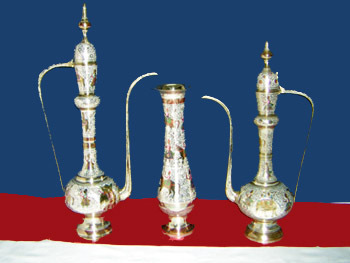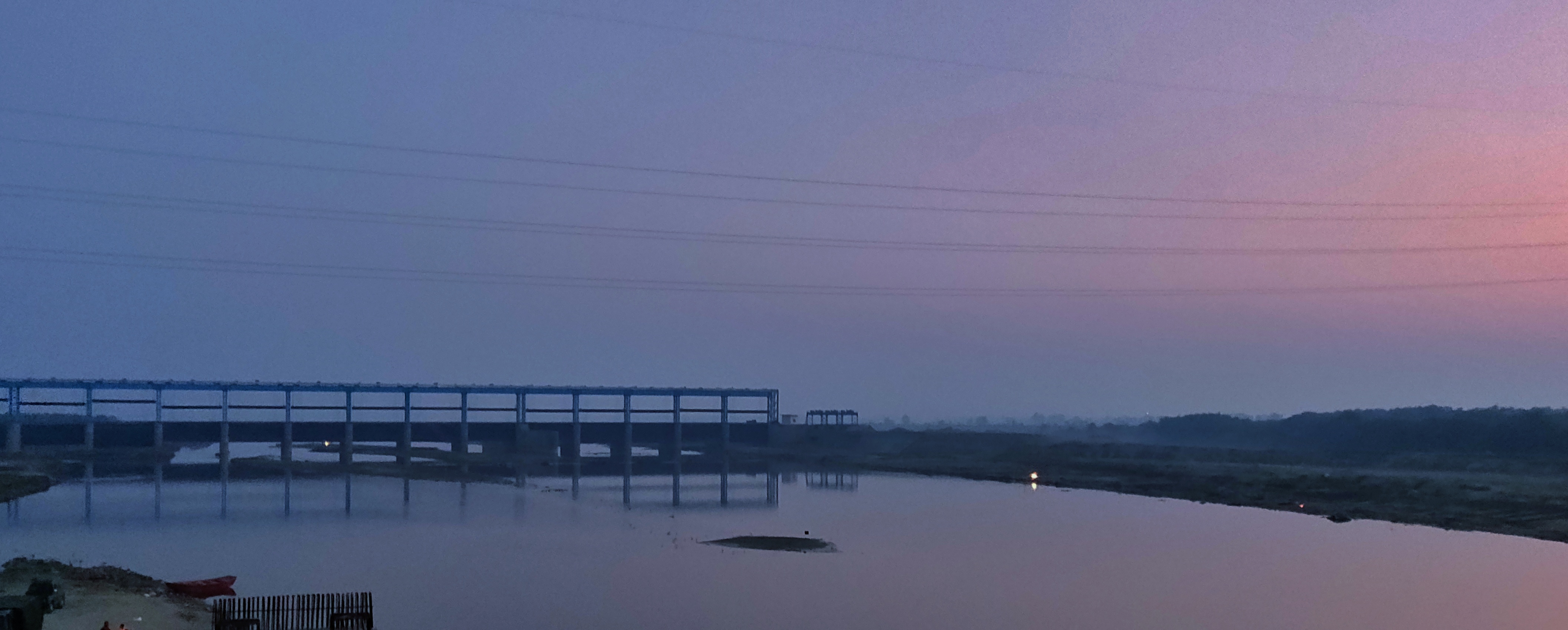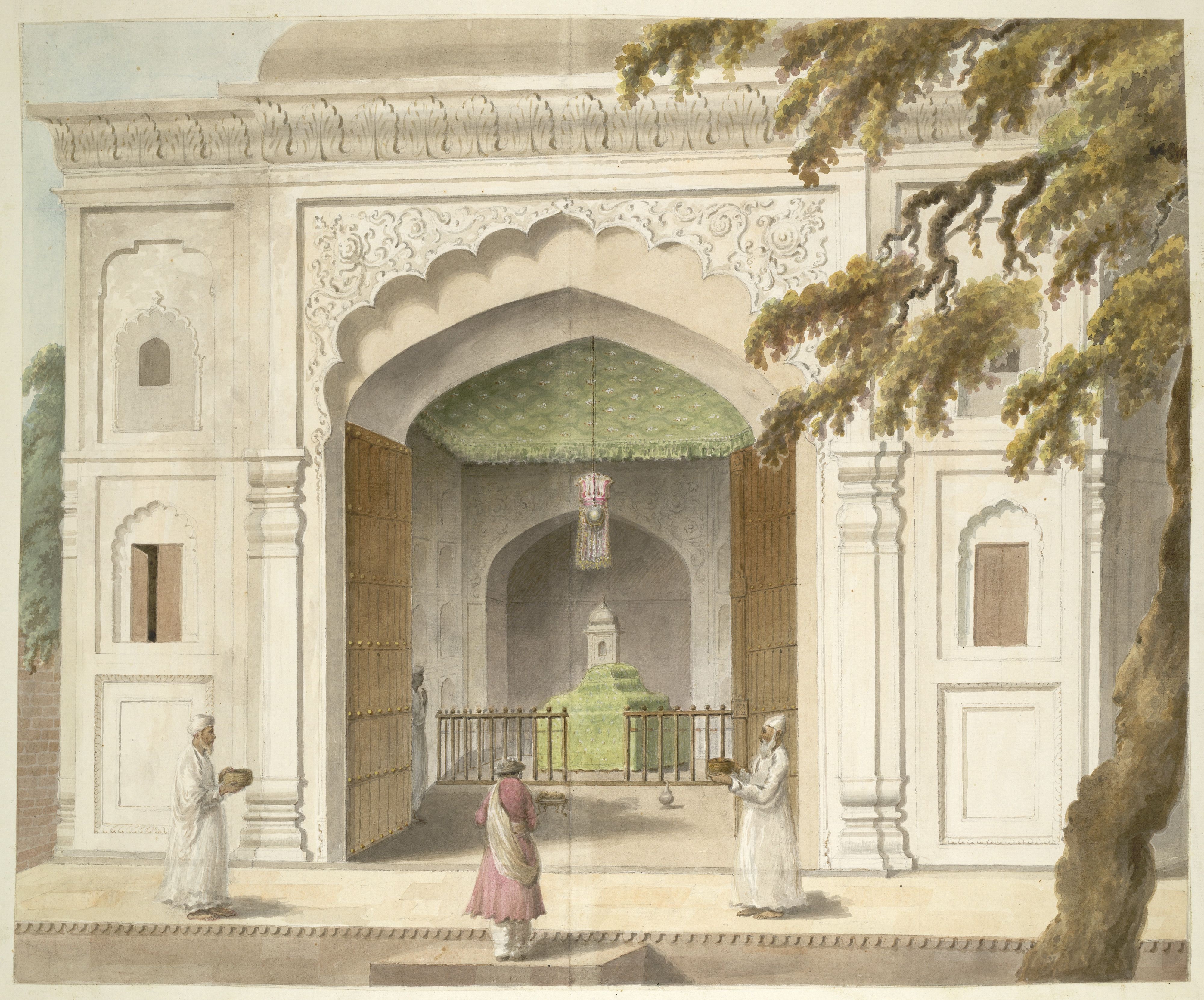|
Muradabad
Moradabad () is a city, commissionary and municipal corporation in Moradabad district of Indian state of Uttar Pradesh. Moradabad is situated on the banks of the Ramganga river, at a distance of from the national capital, New Delhi and 344 km north-west of the state capital Lucknow. Founded by Rustam Khan, the governor of Katehar under the Mughal emperor Shahjahan, Moradabad is named after prince Murad Bakhsh, the youngest son of the emperor. Soon after its establishment, the city replaced Sambhal as the seat of the governor of Katehar. Moradabad was subsequently annexed into the Kingdom of Rohilkhand by Ali Mohammed Khan in 1740. The city came under the control of Oudh State in 1774 after the fall of Rohillas in the First Rohilla War and was then ceded to the British East India Company by the Nawab of Oudh in 1801. In the early nineteenth century, the Rohilkhand area was divided among the Rampur State and two districts - Bareilly and Moradabad; Moradabad became the ... [...More Info...] [...Related Items...] OR: [Wikipedia] [Google] [Baidu] |
States And Territories Of India
India is a federal union comprising 28 states and 8 union territories, with a total of 36 entities. The states and union territories are further subdivided into districts and smaller administrative divisions. History Pre-independence The Indian subcontinent has been ruled by many different ethnic groups throughout its history, each instituting their own policies of administrative division in the region. The British Raj mostly retained the administrative structure of the preceding Mughal Empire. India was divided into provinces (also called Presidencies), directly governed by the British, and princely states, which were nominally controlled by a local prince or raja loyal to the British Empire, which held ''de facto'' sovereignty ( suzerainty) over the princely states. 1947–1950 Between 1947 and 1950 the territories of the princely states were politically integrated into the Indian union. Most were merged into existing provinces; others were organised into ... [...More Info...] [...Related Items...] OR: [Wikipedia] [Google] [Baidu] |
Ramganga
Ramganga is a tributary of the river Ganges, originating in Uttarakhand state, India. Ramganga West Ramganga West River originates from Dudhatoli or Doodhatoli ranges Course The Ramganga River originates in the southern slopes of Dudhatoli Hill in Chamoli district of the Indian state of Uttarakhand. The source of the river, known as "Diwali Khal", is located in Gairsain tehsil at . The river flows by the town of Gairsain, however the town is located at a much higher altitude than the river. The river then enters the Almora district of Kumaon through a deep and narrow valley in Chaukhutia tehsil. Emerging from there, it turns southwest and receives the Tadagatal River, wandering widely around the southeastern boundary of Lohabagarhi. It then proceeds further in the same direction and reaches Ganai, where it receives the Kharogad coming from Dunagiri from the left and Khetasargad coming from Pandnakhal from the right. Coming out of Ganai, it flows towards the Talla Giwar re ... [...More Info...] [...Related Items...] OR: [Wikipedia] [Google] [Baidu] |
Rohilkhand
Rohilkhand (previously Rampur State) is a region in the northwestern part of Uttar Pradesh, India, that is centered on the Rampur, Bareilly and Moradabad divisions. It is part of the upper Ganges Plain, and is named after the Rohilla tribe. The region was called Madhyadesh and Panchala in the Sanskrit epics ''Mahabharata'' and ''Ramayana''. Etymology ''Rohilkhand'' means "the land of the Rohilla". The term ''Rohilla'' first became common in the 17th century, with ''Rohilla'' used to refer to the people coming from the land of Roh, which was originally a geographical term that corresponded with the territory from Swat and Bajaur in the north to Sibi in the south, and from Hasan Abdal (Attock) in the east to Kabul and Kandahar in the west. A majority of the Rohillas migrated from Pashtunistan to North India between the 17th and 18th centuries. Geography Rohilkhand lies on the upper Ganges alluvial plain and has an area of about (in and around the Bareilly and Moradabad divi ... [...More Info...] [...Related Items...] OR: [Wikipedia] [Google] [Baidu] |
Nawab Of Oudh
The Nawab of Awadh or the Nawab of Oudh was the title of the rulers who governed the state of Awadh (anglicised as Oudh) in north India during the 18th and 19th centuries. The Nawabs of Awadh belonged to a dynasty of Persian origin from Nishapur, Iran.''Encyclopædia Iranica'' R. B. Barnett In 1724, Nawab Saadat Ali Khan I, Sa'adat Khan established the Oudh State with their capital in Faizabad and Lucknow. History The Nawabs of Awadh were semi-autonomous rulers within the fragmented polities of Mughal India after the death in 1707 of Aurangzeb. They fought wars with the Peshwa, the Battle of Bhopal (1737) against the Maratha Confederacy (which was opposed to the Mughal Empire), and the Battle of Karnal (1739) as courtiers of the "Great Moghul". The Nawabs of Awadh, along with many other Nawabs, were regarded as members of the nobility of the greater Mughal Empire. They joined Ahmad Shah Durrani during the Third Battle of Panipat (1761) and restored Shah Alam II ( and 1788 ... [...More Info...] [...Related Items...] OR: [Wikipedia] [Google] [Baidu] |
British East India Company
The East India Company (EIC) was an English, and later British, joint-stock company founded in 1600 and dissolved in 1874. It was formed to trade in the Indian Ocean region, initially with the East Indies (the Indian subcontinent and Southeast Asia), and later with East Asia. The company seized control of large parts of the Indian subcontinent, colonised parts of Southeast Asia and Hong Kong. At its peak, the company was the largest corporation in the world. The EIC had its own armed forces in the form of the company's three Presidency armies, totalling about 260,000 soldiers, twice the size of the British army at the time. The operations of the company had a profound effect on the global balance of trade, almost single-handedly reversing the trend of eastward drain of Western bullion, seen since Roman times. Originally chartered as the "Governor and Company of Merchants of London Trading into the East-Indies", the company rose to account for half of the world's trade duri ... [...More Info...] [...Related Items...] OR: [Wikipedia] [Google] [Baidu] |
First Rohilla War
The First Rohilla War of 1773–1774 was a punitive campaign by Shuja-ud-Daula, Nawab of Awadh on the behalf of Mughal Emperor, against the Rohillas, Afghan highlanders settled in Rohilkhand, northern India. The Nawab was supported by troops of the British East India Company, in a successful campaign brought about by the Rohillas reneging on a debt to the Nawab. Background Having been driven into the mountains by the Marathas, a few years earlier, the Rohillas had appealed for aid to Shuja-ud-Daulah, at that time an ally of the British. The Nawab demanded in return 40 rods of gold, that Rohilla chiefs refused to pay. The Nawab then decided to annex their country, and appealed to Warren Hastings for assistance, which was given in return for a sum of forty lakhs of rupees. Hastings justified his action on the ground that the Rohillas were a danger to the British as uncovering the flank of Awadh. Course of the war The Rohillas under Hafiz Rahmat Ali Khan were defeated by Colonel ... [...More Info...] [...Related Items...] OR: [Wikipedia] [Google] [Baidu] |
Oudh State
The Oudh State (, also Kingdom of Awadh, Kingdom of Oudh, or Awadh State) was a princely state in the Awadh region of North India until its annexation by the British in 1856. The name Oudh, now obsolete, was once the anglicized name of the state, also written historically as Oudhe. As the Mughal Empire declined and decentralized, local governors in Oudh began asserting greater autonomy, and eventually Oudh matured into an independent polity governing the fertile lands of the Central and Lower Doab. With the British East India Company entering Bengal and decisively defeating Oudh at the Battle of Buxar in 1764, Oudh fell into the British orbit. The capital of Oudh was in Faizabad, but the Company’s Political Agents, officially known as "Residents", had their seat in Lucknow. At par existed a Maratha embassy, in the Oudh court, led by the Vakil of the Peshwa, until the Second Anglo-Maratha War. The Nawab of Oudh, one of the richest princes, paid for and erected a Resi ... [...More Info...] [...Related Items...] OR: [Wikipedia] [Google] [Baidu] |
Ali Mohammed Khan
Ali Muhammad Khan (bf. 1714 – 15 September 1748) was a Rohilla chief who succeeded his foster father Sardar Daud Khan Rohilla at the age of fourteen. He eventually went on to found the Kingdom of Rohilkhand in the northwestern region of the Uttar Pradesh state of India and was generally regarded as non-oppressive ruler to the masses. He was well regarded for his political ability, and was granted the right to use India's highest insignia of the Mahseer by the Emperor Muhammad Shah. His young death along with the tender age of his children led to Hafiz Rehmat Khan's regency which was in large part governed against his wishes, despite Rehmat Khan's solemn oath on the Quran to fulfil dying Ali Mohammad's will. On his death the disenfranchisement and neglect of his sons by Rehmat Khan caused one son, Allah Yar Khan to die of consumption, and another son Murtaza Khan to leave for Secunderabad where he too would eventually die. Ancestry Ali Muhammad Khan was among the prisoners ... [...More Info...] [...Related Items...] OR: [Wikipedia] [Google] [Baidu] |
Kingdom Of Rohilkhand
The Kingdom of Rohilkhand was a powerful Indian State, nominally under Mughal Suzerainty, that arose under the declining Mughal Empire in 1721 and continued to exist until 1774 when annexation by the British transformed its significantly reduced borders into the Princely State of Rampur. Nawab Ali Mohammed Khan, a scion of the ancient Barha Dynasty became the first Nawab of Rohilkhand, having been previously elected as overlord by various Afghan Chiefs at the age of fourteen . He would carve out the future kingdom from the collapsing Mughal Empire and go on to the found the Rohilla Dynasty . The crown would go on being held by the Rohillas until the kingdom came to an end in 1774, and thereafter the same dynasty would rule over Rampur. Most of Rohilkhand's borders were established by Ali Mohammed Khan and largely came into existence as a check to the power of Oudh State and in that capacity, Nawab Ali Mohammed was supported by the Wazir al Mulk, Qamarudin Khan. Nonetheless, ... [...More Info...] [...Related Items...] OR: [Wikipedia] [Google] [Baidu] |
Sambhal
Sambhal is a city located in the Sambhal district of Uttar Pradesh state in India. The city lies approximately 158 kilometres (98 mi) east of New Delhi and 355 kilometres (220 mi) north-west of state capital Lucknow. History Sambhal has been an urban center for hundreds of years. It was a prominent town during the medieval period. The painting shown here is a folio from the Baburnama, and depicts an award ceremony in Sultan Ibrahim Lodi's court before an expedition to Sambhal in the early 16th century. Sambhal is said to have flourished under the rule of Akbar but subsequently deteriorated in popularity when Akbar's grandson Shah Jahan was made in charge of the city, and the capital of the province was shifted to Moradabad. Demographics As per provisional reports of the 2011 Census of India, the population of Sambhal city in 2011 was 221,334, of which 116,008 were male and 105,326 were female. Total literates in Sambhal city are 92,608 of which 51,382 are males while ... [...More Info...] [...Related Items...] OR: [Wikipedia] [Google] [Baidu] |
Shahjahan
Shihab-ud-Din Muhammad Khurram (5 January 1592 – 22 January 1666), better known by his regnal name Shah Jahan I (; ), was the fifth emperor of the Mughal Empire, reigning from January 1628 until July 1658. Under his emperorship, the Mughals reached the peak of their architectural achievements and cultural glory. The third son of Jahangir (), Shah Jahan participated in the military campaigns against the Rajputs of Mewar and the Lodis of Deccan. After Jahangir's death in October 1627, Shah Jahan defeated his youngest brother Shahryar Mirza and crowned himself emperor in the Agra Fort. In addition to Shahryar, Shah Jahan executed most of his rival claimants to the throne. He commissioned many monuments, including the Red Fort, Shah Jahan Mosque and the Taj Mahal, where his favorite wife Mumtaz Mahal is entombed. In foreign affairs, Shah Jahan presided over the aggressive campaigns against the Deccan Sultanates, the conflicts with the Portuguese, and the wars with Safavids ... [...More Info...] [...Related Items...] OR: [Wikipedia] [Google] [Baidu] |
Mughal Empire
The Mughal Empire was an early-modern empire that controlled much of South Asia between the 16th and 19th centuries. Quote: "Although the first two Timurid emperors and many of their noblemen were recent migrants to the subcontinent, the dynasty and the empire itself became indisputably Indian. The interests and futures of all concerned were in India, not in ancestral homelands in the Middle East or Central Asia. Furthermore, the Mughal empire emerged from the Indian historical experience. It was the end product of a millennium of Muslim conquest, colonization, and state-building in the Indian subcontinent." For some two hundred years, the empire stretched from the outer fringes of the Indus river basin in the west, northern Afghanistan in the northwest, and Kashmir in the north, to the highlands of present-day Assam and Bangladesh in the east, and the uplands of the Deccan Plateau in South India. Quote: "The realm so defined and governed was a vast territory of some , rang ... [...More Info...] [...Related Items...] OR: [Wikipedia] [Google] [Baidu] |







